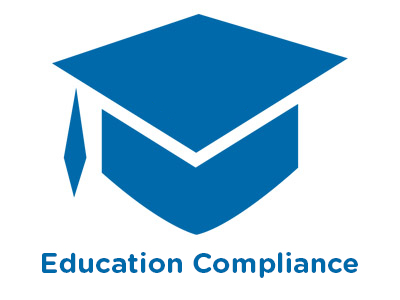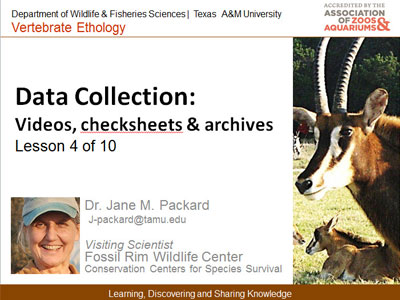 |
Cultural Competence (Corrections) |
0.33 |
Culture reflects belief systems, practices, and the products of beliefs and practices among groups of people. This Cultural Competence training course is designed for participants to engage, reflect, and apply the information provided. |
 |
Quality Management: Customer Orientation |
0.75 |
Customer orientation is an organizational mindset in which meeting the needs of the customer becomes an organization’s focus. Customer orientation is an important aspect of quality management because it ensures customer satisfaction by integrating the customer’s needs into strategic planning, product development, and product delivery.
There are three components that comprise customer orientation: awareness of the market, communication of market intelligence to the entire organization, and initiatives to make use of the market intelligence. |
 |
Quality Management: Customer Orientation (Instructor Guide) |
0.75 |
Customer orientation is an organizational mindset in which meeting the needs of the customer becomes an organization’s focus. Customer orientation is an important aspect of quality management because it ensures customer satisfaction by integrating the customer’s needs into strategic planning, product development, and product delivery.
There are three components that comprise customer orientation: awareness of the market, communication of market intelligence to the entire organization, and initiatives to make use of the market intelligence.
This Instructor's Edition of this course includes notes and suggestions to assist you in presenting the material, whether in an in-person classroom setting or as an instructor-led online or distance-learning course. It also provides you with the answers to questions found in mid-lesson activities, as well as in the quiz that concludes the course. |
 |
Cyberbullying |
1.00 |
Cyberbullying is bullying that takes place over digital devices like cell phones, computers, and tablets. Cyberbullying can occur through SMS, text, and apps, or online in social media, forums, or gaming where people can view, participate in, or share content. Cyberbullying includes sending, posting, or sharing negative, harmful, false, or mean content about someone else. It can include sharing personal or private information about someone else, causing embarrassment or humiliation. Some cyberbullying crosses the line into unlawful or criminal behavior.
In this course, you will:
• Learn the definition of cyberbullying
• Discover tactics on preventing cyberbullying
• Discover tips on communicating with parents and teachers, and how to report instances of cyberbullying |
 |
Data Security Training |
1.00 |
Data hacks in higher education are the second-highest category of reported industry breaches, accounting for 17 percent of all reported hacks. Resolving data hacks is expensive, costing anywhere from hundreds of thousands to millions of dollars. Understanding how to maintain data security is key to preventing hacks and keeping sensitive data private. |
 |
Power and Pride: The Origins of Pride Month |
1.00 |
Decades of oppression of the LGBTQ+ community, cultural shifts in the 1960s, and good troublemaking led to that fateful night at Stonewall. You’ll learn how the events on June 28 became a catalyst for change and a symbol for LGBTQ+ rights that evolved into today’s Pride festivals and marches. This course explores the key events and personalities in the United States that ultimately shaped a global movement. |
 |
Dementia and Oral Health |
1.00 |
Dementia is one of the main causes of disability among older adults. Alzheimer’s disease is the most common form of dementia. The oral health of patients with Alzheimer’s disease can be worse than that of those without dementia. Therefore, maintaining good oral health is an important and integral part of their general health. The purpose of this educational module is to provide an overview of oral health and the importance of oral care for patients with Alzheimer’s disease. |
 |
Development and Characteristics of Learners for Teachers |
1.00 |
Development and Characteristics of Learners will assist you in fostering a solid understanding of how children develop and the disability categories that may impact their learning. This course will also help you gain invaluable insight into ways you can support children and meet their needs. |
 |
Building Foundations for Language and Literacy Development (CDA 8) |
2.00 |
Did you know infants are language-learning powerhouses? Their brains are primed to soak up any language. But to unlock their speaking potential, they need your voice! This session empowers you to discover playful ways to nurture language and literacy skills in infants and toddlers. Together, we'll assess current practices and identify opportunities to strengthen the foundation for a lifelong love of language and learning. |
 |
Construction Safety & Prevention Program: Disciplinary Policy Employer Responsibility |
0.50 |
Disciplinary Policy Employer Responsibility is part of a twelve-part construction safety and prevention program. This course covers how to implement proper disciplinary programs in the case of safety violations or insubordination. You will learn how to keep track of these programs and learn how to communicate these programs. |
 |
Correcting Performance Problems: Disciplining Employees (Instructor Guide) |
1.67 |
Discipline is proactive, as opposed to punishment, which is reactive. Punishment provides a consequence to an action that is deemed unacceptable, whereas discipline is designed to exchange undesirable behavior for satisfactory behavior.
The purpose of disciplining an employee is twofold:
1. To correct or eliminate undesirable behavior, and
2. To provide training that improves or strengthens performance.
In this course you will learn to: keep a disciplinary perspective, determine the cause for disciplining an employee, and prepare for conducting a disciplinary meeting, maintain a positive rapport, avoid pitfalls during a disciplinary meeting with employees, and keep meetings productive, and monitor employee performance and conduct a follow-up meeting with the employee.
This Instructor's Edition of this course includes notes and suggestions to assist you in presenting the material, whether in an in-person classroom setting, or as an instructor-led online or distance-learning course. It also provides you with the answers to questions found in mid-lesson activities, as well as in the quiz that concludes the course. |
 |
Correcting Performance Problems: Disciplining Employees |
1.67 |
Discipline is proactive, as opposed to punishment, which is reactive. Punishment provides a consequence to an action that is deemed unacceptable, whereas discipline is designed to exchange undesirable behavior for satisfactory behavior.
The purpose of disciplining an employee is twofold:
1. To correct or eliminate undesirable behavior, and
2. To provide training that improves or strengthens performance.
In this course you will learn to: keep a disciplinary perspective, determine the cause for disciplining an employee, and prepare for conducting a disciplinary meeting, maintain a positive rapport, avoid pitfalls during a disciplinary meeting with employees, and keep meetings productive, and monitor employee performance and conduct a follow-up meeting with the employee. |
 |
Diversity, Equity, and Inclusion Training (Corrections) |
1.00 |
Diversity, Equity and Inclusion have become an important part of creating a culture that thrives on leveraging differences.
The goal is to learn:
Definitions of Diversity, Equity, and Inclusion
Why Diversity, Equity, and Inclusion is Important to Everyone?
Our Identity and Where it Comes From
Bias and The Impact to Others
Next Steps to Take |
 |
Diversity, Equity, and Inclusion Training |
1.00 |
Diversity, Equity and Inclusion have become an important part of creating a culture that thrives on leveraging differences.
The goal is to learn:
Definitions of Diversity, Equity, and Inclusion
Why Diversity, Equity, and Inclusion is Important to Everyone?
Our Identity and Where it Comes From
Bias and The Impact to Others
Next Steps to Take |
 |
Americans With Disabilities Act and Transition Plans |
1.00 |
Do Title II and Title III of the Americans with Disabilities Act apply to you?
Do you work for a non-profit or for-profit zoo, aquarium, or museum? Is your zoo, aquarium, or museum operated by your state or local government? Do you have a Transition Plan or Barrier Removal Plan for your organization? Do you know that the Justice Department or your State's Attorney's Office could sue your organization if you are not in compliance? Fines can cost an organization $55,000 plus compensation just for an initial infraction.
This comprehensive webinar will discuss the development of a plan, examples of that plan, common accessibility issues, and an overview of what to look for in your policies and procedures that could cause an accessibility issue. |
 |
Email Basics |
1.00 |
Do you ever feel like the only person who doesn't use email? You don't have to feel left out. If you're just getting started, you'll see that with a little bit of practice, email is easy to understand and use. In this lesson, you will learn what email is, how it compares to traditional mail, and how email addresses are written. You'll also learn about various types of email providers and the features and tools they include with an email account. |
 |
Data Collection: Videos, Check-sheets & Archives |
1.00 |
Do you have an enthusiastic team of volunteers and are concerned about observer reliability? Learn how to fine-tune behavioral observation protocols to maximize accuracy and reliability. The advantages and disadvantages of video records and check-sheets will be discussed as well as ethograms. A workable process for recording and archiving video-data will be demonstrated, to facilitate efficient sharing within a team. |
 |
Vertebrate Ethology Series: Team Building and Collaborative Research |
1.00 |
Do you want to collect behavioral data to aid in decision-making about animal husbandry, but are not sure where to start? Listen in as a research team invites graduate students to join in the collaborative effort. In this webinar, you will learn more about the inquiry cycle and how it will be simplified into 8 steps that the team will complete together over the next 2 months. This team is investigating a "bull switching" treatment for managing big herds of African antelope. However, the inquiry process would be applicable for any research topic. |
 |
San Diego Zoo - Interpretation Basics: Module 2 |
2.50 |
Docents, guides, and interpreters who’ve successfully completed Interpretation Basics: Module I will further develop their interpretive skills by completing a second interpretation module. Interpretation Basics: Module II demonstrates the importance of purpose, message, and organization. Participants explore body language, word choice, question-and-response, transitions, and the use of props and biofacts. They identify techniques for enhancing audience participation and even practice handling challenging visitor situations. |
 |
Inquiry Questions: Bridging Science and Practice |
1.00 |
Does your staff have a lot of behavioral questions, but are not sure how to narrow the focus in a manner that will contribute most directly to an adaptive management approach? In this webinar, learn to analyze behavioral questions in terms of the 3 C's: challenges, choices and consequences. This process is the springboard to fine-tuning questions that can be answered in a manner to best aid in decision-making and in testing hypotheses |
 |
Domestic Abuse |
2.00 |
Domestic Violence, or Intimate Partner Violence (IPV), is defined as physical abuse or aggression that occurs in a romantic relationship. “Intimate partner” refers to current and former spouses and dating partners.
This course will discuss the causes of domestic abuse, explain what characteristics to look for when identifying domestic abuse, determine appropriate ways to address abuse in your relationship or with a loved one, suggest ways to prevent abuse, and provide resources for further assistance with domestic abuse. |
 |
Review of Resuscitation |
1.50 |
Dr. Erik Rueckmann and Paramedic Sal Valdez sit down with Paramedic Michael Hoskins in this insightful interview. Their discussion will lead you through the concepts of resuscitation and the teamwork that is inherently integrated in the efforts to be successful.
Final Exam: This multiple-choice exam is designed to test your knowledge of the material you just reviewed. You have two attempts to gain an 70% or higher on this exam. Please take your time and answer each question carefully. |
 |
The Value of a Great Strategic Plan |
2.00 |
During this course, you'll see how a great strategic plan can help you achieve a deep understanding of your purpose, clarify your priorities, and deliver maximum mission impact - without sacrificing financial sustainability. At the end of the course, we will show how strategic planning at San Diego Zoo Global helped to transform our organization, generated impressive results, and paved the way for a better future for wildlife. |
 |
The Latest and Greatest in Employee Benefits |
1.00 |
During this highly informative webinar, you will learn of the innovative ways San Diego Zoo Global was able to maintain benefit costs, help employees to better understand and appreciate their benefits and save time enrolling in their benefits, and other current trends in the complex world of employee benefits. |
 |
E-Mail Etiquette: E-Mail Basics |
1.00 |
E-commerce has become one of the most effective ways of doing business. Most companies conduct some of their communications online, so it is important for their employees to write effective electronic mail, or e-mail, messages. E-mail is the exchange of text messages by using computers. To send e-mail messages, users need to type in the address of the person to whom they want to send the message, write the message, and click "Send." |


























